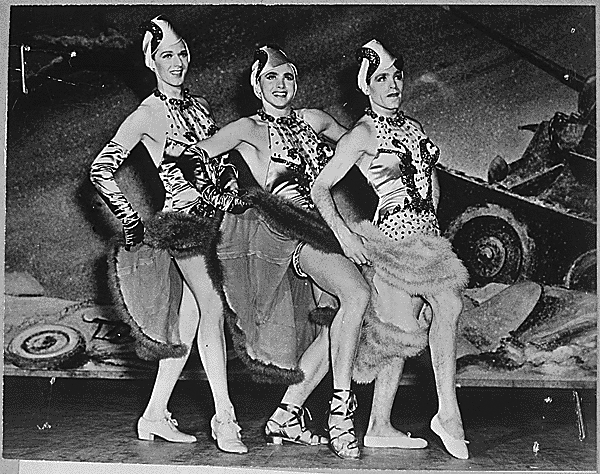Once upon a time...
A marketer named Sam was going about her life when one day her manager asked her to put together a campaign to promote their newest product, an auto-tweeter that will automatically determine whenever you've said something clever/funny/smart and tweet it for you (not a thing...but imagine if it was??).
Determined to make an impression and get a promotion, Sam immediately agreed and set off to the task. She did the research, talked to her customers, and put together a creative brief. Happy with her work, she showed it off to her manager to get input before moving forward.
"This needs work," her manager said, simply. Sam was crushed. Disheartened. How could her manager not love the campaign she put together? Curious, she asked how she could improve. "There's just nothing...inspiring about this campaign. Nothing that gets me, or our customers, to want the auto-tweeter."
Sam went back to her desk and thought for a moment. How could she make this campaign better? What could she add? Stuck, she asked her team members for more input. After some discussions she still couldn't figure out what it was. She had 3 hours left to completely rework the campaign and she didn't even know where to start.
Until...yep, there it was. The perfect thing. With a little over 2 hours left until her campaign was due, she added the missing element and made her brief stronger than ever. She brought it back to her manager right in the nick of time, and got approval to move forward.
If you've read this far without skimming, you've just experienced the power of storytelling. And if it works on a blog post, I'm here to tell you this: it works for an inbound strategy as well.
But First, What Is Storytelling?
Unless you quite literally live under a rock and haven't talked to a single soul in your life, you've encountered storytelling.
The last movie you saw. The last book you read. Maybe even the last conversation you had (did I tell you what happened last weekend??).
Storytelling is the oldest form of communication. It's how we form connections with each other and make sense of the world. In a very real way, it's how we interact with everything around us.
Before we dive into storytelling in marketing, let's take a look at the high-level structure of a story:
Act 1: The Introduction
Here, you are introduced to the main character(s) and given a glimpse of their everyday lives. That is, until something disrupts their daily routine (the inciting incident).
In the story above, we see that Sam is a marketer. The disruption comes when her manager asks her to create a new campaign.
Act 2: The Conflict
Every good story has conflict. Here, the protagonist (hero character) is fighting against something to reach their goal. Something is going up against them, and they need to overcome these obstacles to achieve that objective.
In the story above, Sam has created her creative brief and shown it to her manager. The manager tells her to rework it, and doesn't accept it as it is, creating some conflict.
Act 3: The Resolution
The resolution is the achievement, the reached objective. The character has reached their goal and the feeling should be rewarding.
In the story above, Sam ends up fixing up her campaign and her manager gives the stamp of approval.
You can find examples of storytelling in nearly every form of art and communication. It makes an appearance in movies, books, music, games, theater, public speaking, and yes, marketing.
How Storytelling Fits Into Marketing
Put simply, stories bring people together.
Someone at a networking event might tell you a story about a hike they went on over the weekend. Wait, you like hiking, too! So you respond with a hiking story of your very own. Before you know it, you're exchanging hiking stories and making plans to hit the trails next month.
The same thing happens when people come across a campaign they connect with.
Let's take Google's recent Superbowl LIV ad, Loretta, for example.
It starts out by showing the search bar, something we're all very familiar with. In it, someone off-camera types "how to not forget."
Then, for the next 75 or so seconds, you hear an elderly man asking Google to remember things about his wife, Loretta. He asks her to remember things like how she hated his mustache, how she loved going to Alaska (and scallops), and how she always snorted when she laughed.
It's an incredibly touching spot that had its viewers tearing up all over the country. Why?
While the ad itself doesn't tell you the whole story, it does let you assume a few things:
- A man is looking back on good memories
- He misses his wife, Loretta
- Loretta is not there (likely passed away)
- He is trying not to forget the good times, or the little things
Many of us have felt nostalgic. Many of us have loved ones that we have missed at one time or another. Many of us have fallen in love. And most of all, many of us don't want to forget the little things that make life worth living.
How Stories Fit Into an Inbound Strategy
An advertisement is one of the most obvious examples of how storytelling fits into marketing. However, it's not the only way.
Within an inbound marketing strategy, your prospect, the buyer, is the hero.
The inbound methodology, similar to the story structure, breaks down the Buyer's Journey, or the Hero's Journey, into three sections.
- Awareness
- Consideration
- Decision
Notice how these stages tie in with the three acts listed above?
If we reframe these sections from the perspective of a story, we see that they may align like this:
- Awareness —> Introduction
- Consideration —> Conflict
- Decision —> Resolution
1. Awareness —> Introduction
The hero, your buyer, is being introduced to you, the company. They're living their lives when suddenly, something disrupts it and they have a problem.
So, they conduct a quick Google search to learn about the different aspects of the problem and how to solve it and come across a blog post from a company's website.
Using an example from the story above, imagine that, after her manager told her to add more heart to her campaign, Sam goes into Google and typed, "how to make my marketing campaign more inspiring". Then, she finds an article that detailed 3 ways she could incorporate more inspiration into her campaign. One of those ways mentions using storytelling to get her prospects to connect.
2. Consideration —> Conflict
Here, the hero now knows their end goal, and is doing everything they can to reach it. They have named the problem based on the situation they found themselves in and are ready to take the next step. Yet, they aren't able to do so because they don't have the right tools/resources/knowledge to move forward. So they decide they need some help.
In Sam's case, perhaps she doesn't have the tools to be able to effectively tell a captivating story within her campaign. So she decides she wants to hire a storytelling consultant to help her flush out that part of the campaign.
3. Decision —> Resolution
Finally, the hero knows what they need to do and are making their final decision on which product/service/vendor to purchase.
For Sam, she weighs the value and considerations of 3 different storytelling consultants before eventually deciding on one and working with them to finish up her campaign.
Beyond Just Structure
As you can see, the basic story structure fits neatly within the inbound methodology. To ensure your inbound campaign connects with buyers, it's crucial to treat it like a story.
There are many ways to throughout your content and campaign planning. But the key here is to help your buyer, the hero, get to their end goal. Your company is the guide that helps them on their journey to solve their problem. So your marketing should show just that.
In the future, we'll break down how you can leverage content to tell a cohesive story that gets your buyers to take action. But in the meantime, give us a shout to get your inbound marketing off the ground.
Don’t miss out, get Brave News now
Join the ABN community and be the first to learn about trends in inbound marketing, branding, and web design.






